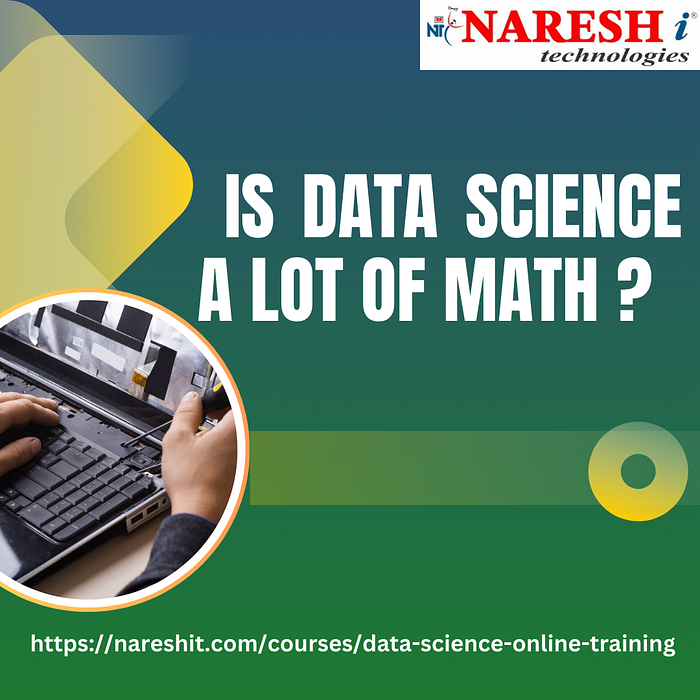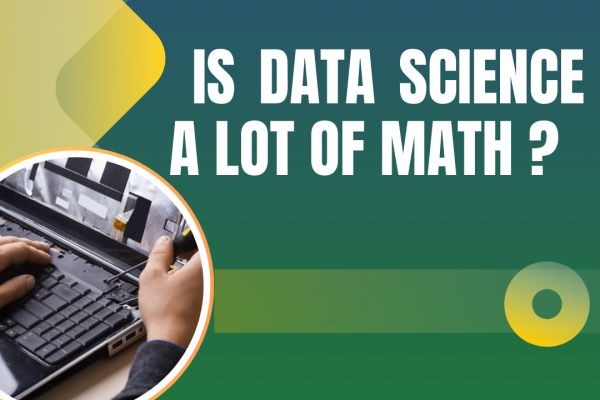
Data science is often portrayed as a field driven by complex algorithms, advanced computations, and mathematical rigor. While math is undeniably a key component of data science, the field is much more than just numbers and equations. Understanding the role of math in data science can help clarify how much you need to know and why it matters.
The Role of Math in Data Science
Mathematics serves as the foundation of many data science techniques and methodologies. Here’s how:
1. Statistics and Probability
- Essential for understanding data distributions, creating models, and making predictions.
- Concepts like hypothesis testing, confidence intervals, and Bayes’ theorem are integral to decision-making in uncertain conditions.
2. Linear Algebra
- Powers machine learning algorithms, especially in areas like deep learning.
- Concepts such as matrices and vectors are used in data transformations and dimensionality reduction techniques like PCA (Principal Component Analysis).
3. Calculus
- Supports optimization in machine learning, such as gradient descent in neural networks.
- Helps in understanding changes and learning rates in algorithms.
4. Discrete Mathematics
- Plays a role in understanding structures like graphs and networks, crucial for algorithms like PageRank and social network analysis.
5. Algebra
- Used in understanding relationships between variables and solving equations that underlie predictive modeling.
Do You Need to Be a Math Whiz?
Not necessarily. While math is foundational, the level of expertise required depends on the role and tasks. Here’s a breakdown:
1. For Data Wrangling and Basic Analysis
- Basic statistics and algebra are sufficient for cleaning data, visualizing trends, and interpreting results.
2. For Machine Learning and Model Development
- A deeper understanding of linear algebra, calculus, and probability is helpful but not always mandatory. Libraries like TensorFlow and Scikit-learn abstract much of the math.
3. For Research and Algorithm Design
- Advanced mathematics becomes crucial if you’re developing new algorithms or working on cutting-edge research.
The Balance Between Math and Tools
Modern data science tools and libraries (e.g., Python’s Pandas, NumPy, and Scikit-learn, or R) have made it easier to apply mathematical concepts without delving into the details. However, a strong mathematical foundation enhances your ability to:
- Debug and optimize algorithms.
- Understand model behavior and limitations.
- Communicate results effectively with stakeholders.
How to Approach Math in Data Science
1. Learn as You Go
- Start with practical problems, and study math concepts when they arise.
2. Focus on Applications
- Prioritize applied statistics and linear algebra since they are the most frequently used.
3. Use Resources
- Leverage online courses, tutorials, and textbooks that combine math with practical coding exercises.
Conclusion
Data science does involve math, but how much you need to know depends on your specific role and goals. Many tasks can be accomplished with basic math, while advanced roles might require deeper expertise. The key is to focus on practical application and build your mathematical knowledge as you grow in your career.
Data science is a combination of analytical thinking, programming, domain knowledge, and yes, mathematics — but it’s also about curiosity and solving real-world problems. Embrace the math as part of the toolkit, not the whole picture.
For More Details Visit : https://nareshit.com/courses/data-science-online-training
Register For Free Demo on UpComing Batches : https://nareshit.com/new-batches








